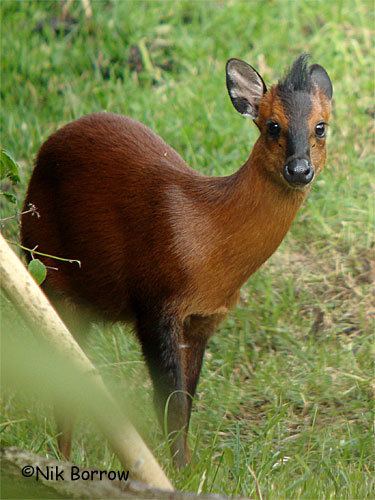Phylum Chordata Order Artiodactyla Genus Cephalophus Rank Species | ||
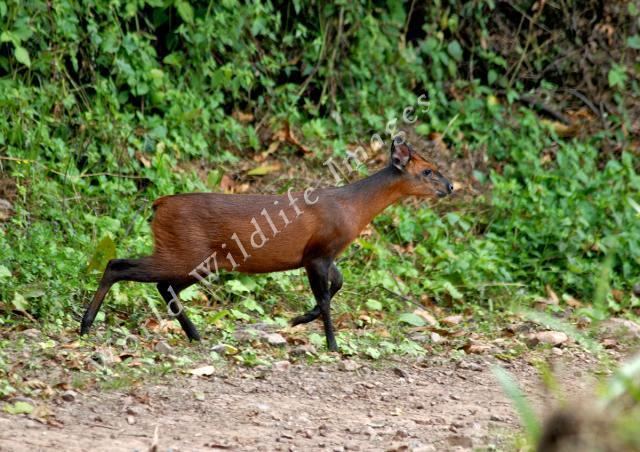 | ||
Similar Peters' duiker, White‑bellied duiker, Black duiker, Ogilby's duiker, Bay duiker | ||
The black-fronted duiker (Cephalophus nigrifrons) is a small antelope found in central and west-central Africa.
Contents
Description
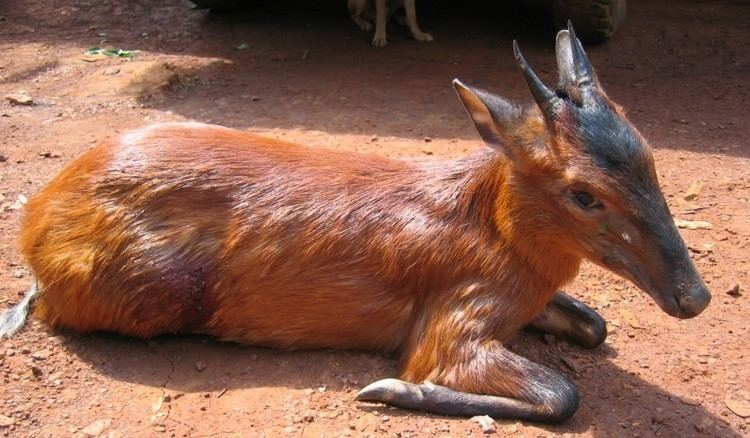
The black-fronted duiker is a compact, short-necked and active antelope which gets its name from the broad black streak that runs from the nose to its forehead, a feature distinguishing it from its congeners. It has a glossy coat which is deep reddish-mahogany to a lighter orange-chestnut in colour, the hair becoming sparser and darker on the long legs. It has a short tail which is black with a white tip. They have short, pointed horns, measuring 4–12 cm which are carried by both sexes and are used for defence against other duikers and predators. Their elongated hooves appear to be an adaptation to the wet habitats they seem to prefer. It weighs 14–18 kg (31–40 lb) and a shoulder height of 43 cm (17 in).
Distribution
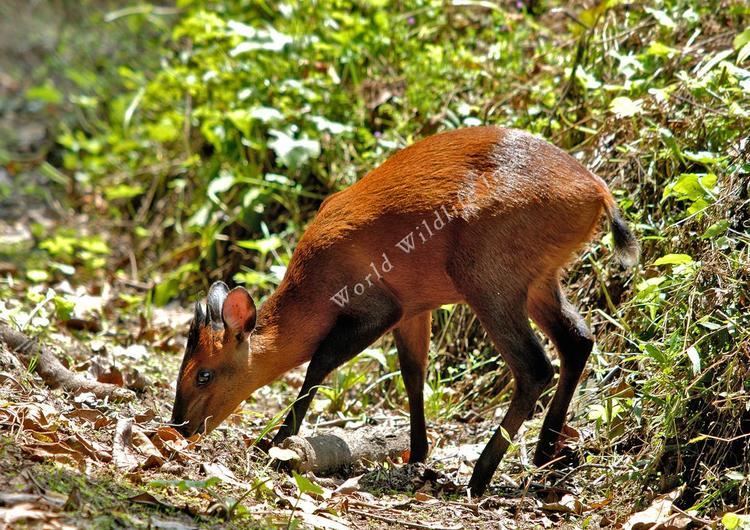
The black-fronted duiker is found in central and west-central Africa, with an isolated population in the Niger Delta in eastern Nigeria and then from southern Cameroon west to western Kenya and northern Angola.
Habitat

The black-fronted duiker occurs in montane, lowland, and swamp forests, from near sea level up to an altitude of 3,500 metres, it is frequently recorded in wetter areas such as marshes or on the margins of rivers or streams.
Habits
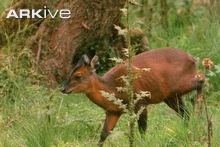
The black-fronted duiker is territorial and monogamous, each pair oding a territory which it defends against their neighbours and is marked using the secretions of the facial glands. The pair have habitual paths within their which connect sleeping sites with feeding areas, and allow them to be active during both day and night. They are mainly browsers but will also feed on fruit.
Subspecies
The currently recognised subspecies are:

